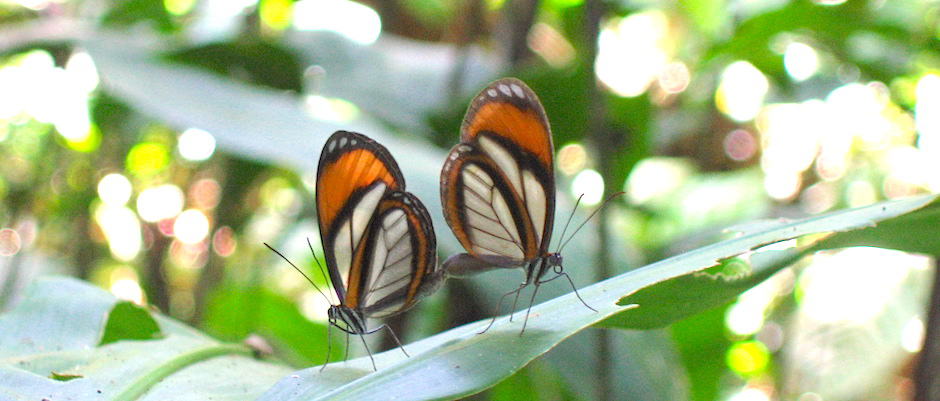Share this article
Microhabitats drive butterfly diversity
Butterflies’ wing patterns often signal to birds that they’re toxic, and other species of butterflies will sometimes display the same patterns to maximize the chance they won’t be eaten.
But if this kind of mimicry is so helpful, why do so many butterflies still have so many different patterns?
That was the question an international group of biologists from the Florida Museum of Natural History, University of Cambridge and Muséum National d’Histoire Naturelle set out to solve.
“You see eight, 10 or more different mimicry patterns in a single site,” said Marianne Elias, a researcher with France’s Muséum National d’Histoire Naturelle. “This is a big puzzle. If selection for convergence is so strong, why don’t all species converge to the same pattern?”
Some butterflies carry chemical repellants that make them toxic or distasteful to insectivorous birds, Elias said, and they indicate these unappetizing traits through prominent color patterns on their wings. After predators try to consume them, she said, they realize they’re inedible and avoid those patterns. When other poisonous or unpalatable butterflies imitate these warning signals, they maximize their chances of averting predation by the same species, she said.
“If all butterflies have the same patterns, the individual cost borne by each butterfly is divided because it’s strength in numbers,” Elias said.
But instead, the wing designs are very diverse, even within one little area of habitat.
Studying butterflies in the Amazon, her research team found that the variety of patterns developed as a response to different predatory birds, which occupied tiny microhabitats within small sections of the same forest.
“While we see the forest as homogenous, it’s made up of multiple microhabitats,” said Elias, co-author on the paper published in Proceedings of the Royal Society B. “If birds are segregated in different microhabitats, and butterflies are segregated in a similar way, there is no convergence in wing color pattern across microhabitats.”
The researchers conducted experiments in the lowland rainforests of Ecuador for three months in 2015. Studying plots on ridges and streams, each about 3 square kilometers in area, they documented various species of mimetic butterflies — butterflies that copy other butterflies’ patterns —and predatory birds.
In the understory near small streams, they recorded the inachia clearwing (Napeogenes inachia) and Ithomia amarilla, both of which have transparent yellow wings. On ridges and around the canopy, they noted the Hewitson’s tiger (Melinaea menophilus) and Mazaeus tigerwing (Mechanitis messenoides), which both bear tiger-like patterns.
The scientists also saw certain predators in certain places. The spot-backed antbird (Hylophylax naevius) frequented the understory. The wedge-billed woodcreeper (Glyphorynchus spirurus) occupied the mid-story and ridge tops.
They concluded that because these different birds occur in different microhabitats, the butterflies develop a wide range of cautionary wing designs, even in a small section of forest. This equips mimetic butterflies with defense against predators specific to their areas, Elias said.
“If you walk through a forest, you might see different mimicry patterns,” she said, “but they occur in slightly different microhabitats.”
Header Image: A pair of Napeogenes sylphis mates in the understory of the lowland Amazonian forest in Ecuador. ©Marianne Elias








